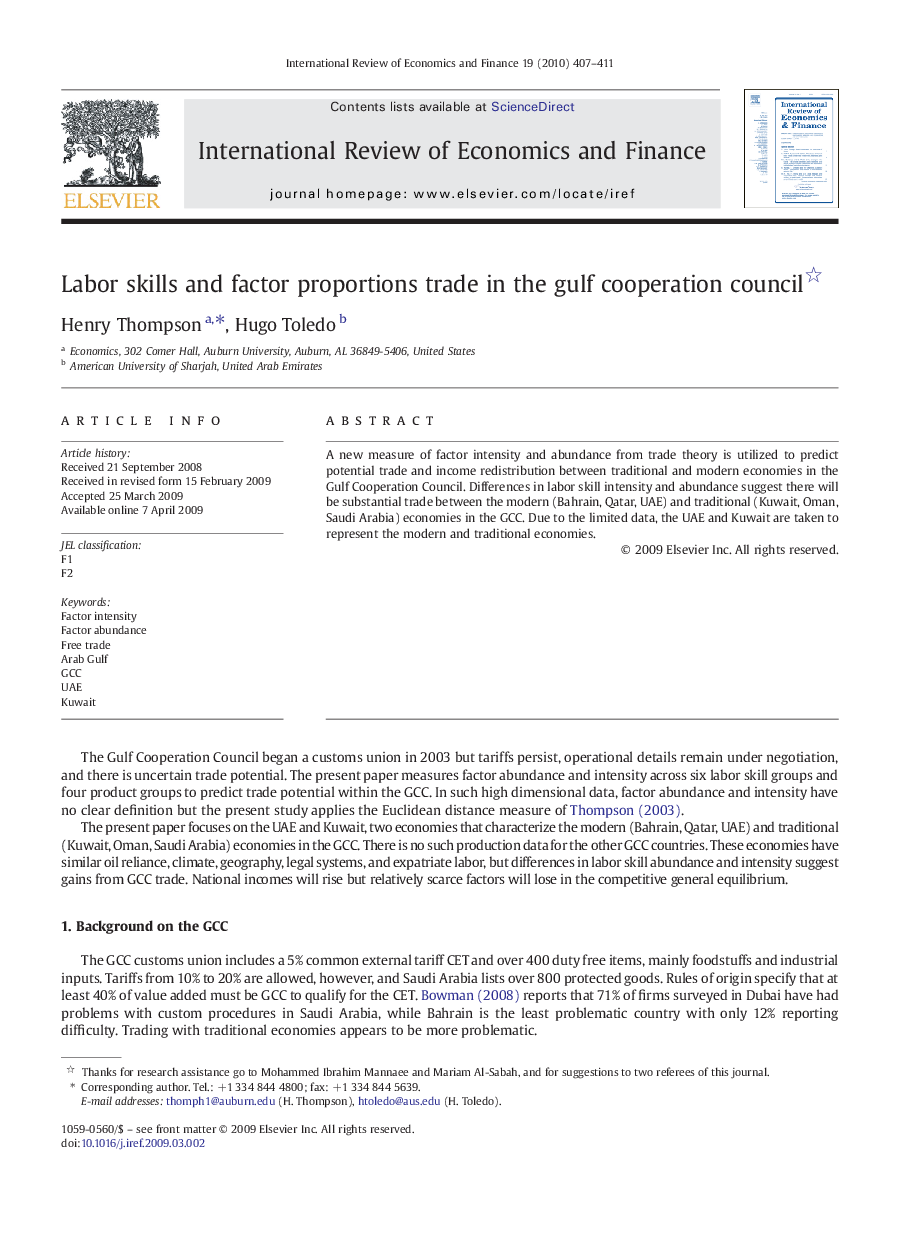| Article ID | Journal | Published Year | Pages | File Type |
|---|---|---|---|---|
| 5084000 | International Review of Economics & Finance | 2010 | 5 Pages |
Abstract
A new measure of factor intensity and abundance from trade theory is utilized to predict potential trade and income redistribution between traditional and modern economies in the Gulf Cooperation Council. Differences in labor skill intensity and abundance suggest there will be substantial trade between the modern (Bahrain, Qatar, UAE) and traditional (Kuwait, Oman, Saudi Arabia) economies in the GCC. Due to the limited data, the UAE and Kuwait are taken to represent the modern and traditional economies.
Related Topics
Social Sciences and Humanities
Economics, Econometrics and Finance
Economics and Econometrics
Authors
Henry Thompson, Hugo Toledo,
